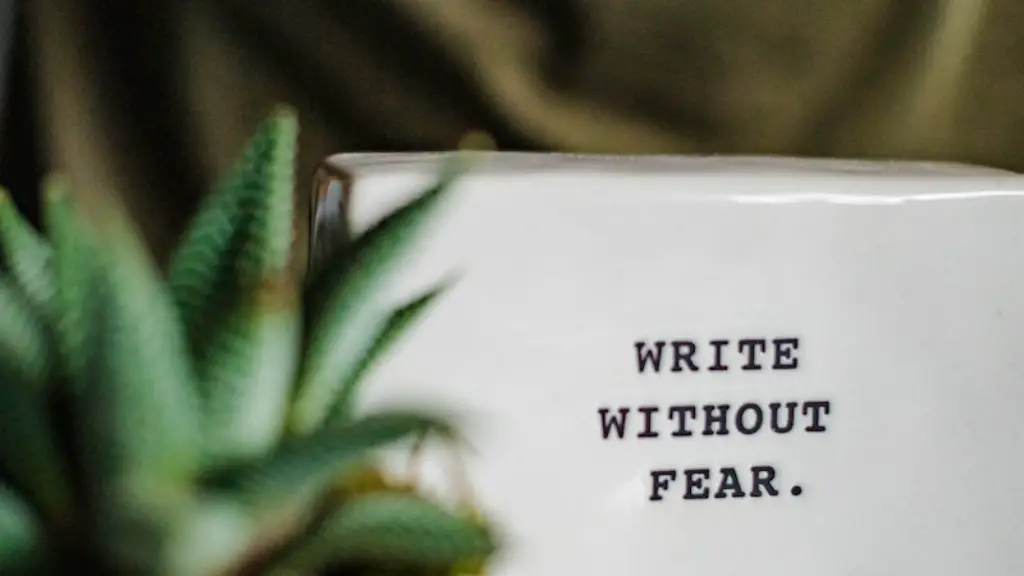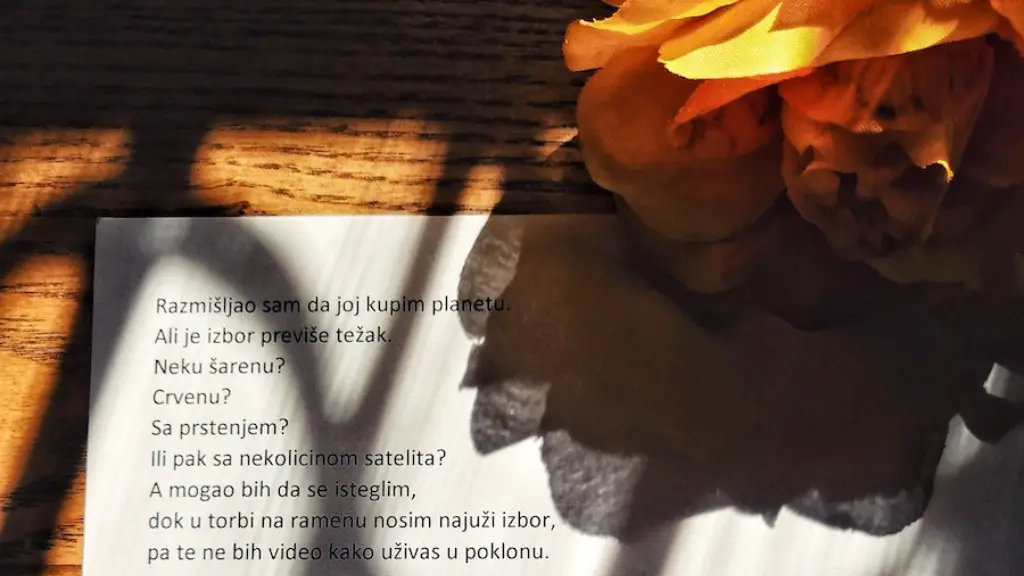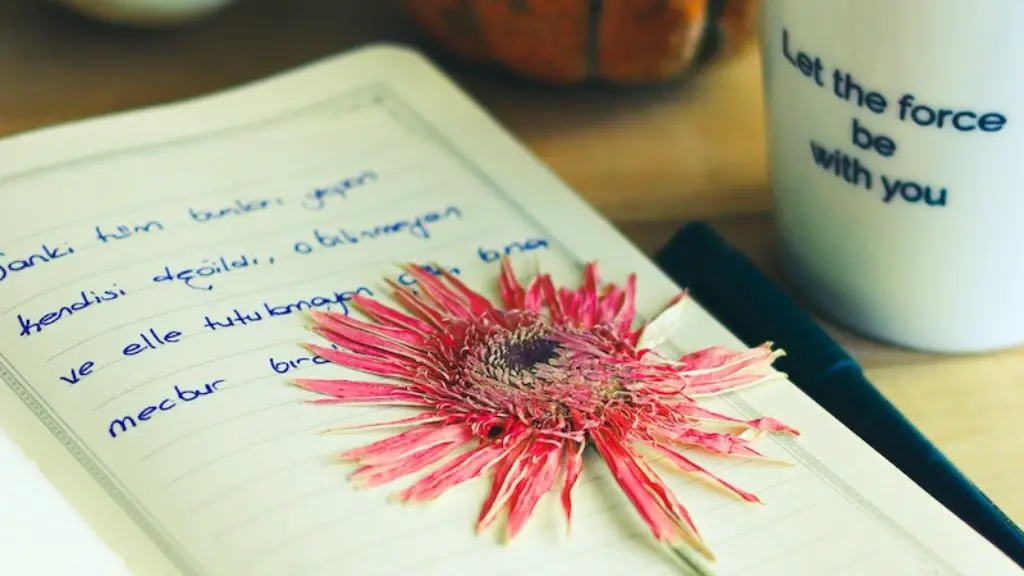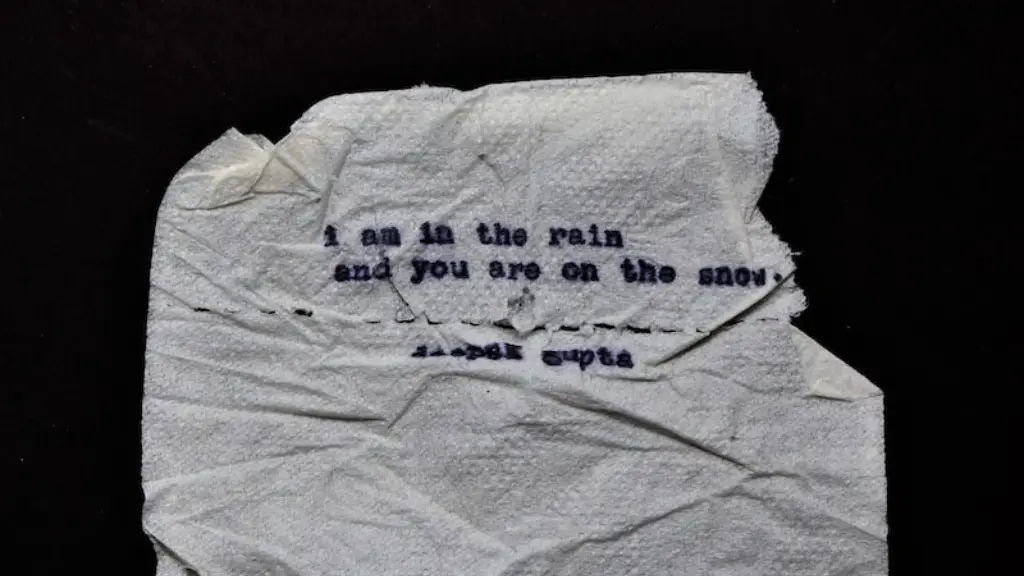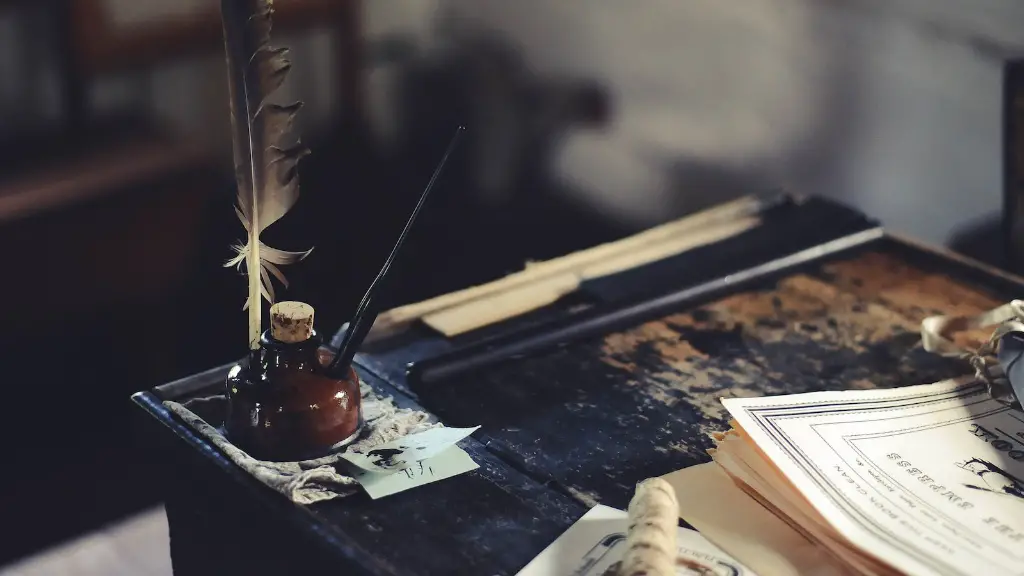In order to write an Emily Dickinson poem, one must first understand the poet and her work. Emily Dickinson was an American poet who lived in the 19th century. She is known for her unique style of poetry, which often dealt with subjects such as death and love. Dickinson’s poems are often short, and they often use unconventional forms and language.
There is no one answer to this question, as Emily Dickinson’s poems can vary greatly in style and subject matter. However, some tips on writing an Emily Dickinson-inspired poem may include focusing on everyday objects or events and using spare, simple language to convey complex emotions. Additionally, it can be helpful to experiment with short lines and unconventional punctuation, as Dickinson often did in her own poems.
How to write a poem with Emily Dickinson style?
Emily Dickinson’s poems are known for their use of short stanzas, mostly quatrains, with short lines. This poetic form allows her to convey a great deal of information in a relatively concise manner. Other stanzas employed by Dickinson include triplets or pairs of couplets, which add variety and interest to her poems.
Emily Dickinson’s poetry uses an ABCB rhyme scheme. This means that in a stanza of four lines, the second and fourth lines rhyme, but the first and third do not.
What literary techniques does Emily Dickinson use
Dickinson’s use of imagery, enjambment, and dashes creates an ambiguity that allows for multiple interpretations of her poetry. By using these devices, Dickinson allows the reader to fill in the gaps and create their own meaning from the poem. This ambiguity can be seen as a strength of her poetry, as it allows for each reader to have a unique experience with the poem.
Emily Dickinson was a keen observer, and she used images from nature, religion, law, music, commerce, medicine, fashion, and domestic activities to probe universal themes. She was interested in the wonders of nature, the identity of the self, death and immortality, and love. Her writing was influenced by her own life experiences and the world around her.
What are the 7 steps to writing a poem?
1. Choose a topic: The first step to writing a poem is to choose a topic. This can be anything from an object to an emotion.
2. Journal: Once you have a topic, it can be helpful to journal about it. This can help you develop ideas and get a better understanding of what you want to say.
3. Think about form: The next step is to think about the form of your poem. This includes things like the length, rhyme scheme, and meter.
4. Write the first line: The first line of a poem is often the most important. It sets the tone and gives the reader an idea of what the poem will be about.
5. Develop ideas and devices: As you write, you can develop ideas and devices that will help your poem flow better. This can include things like similes, metaphors, and symbolism.
6. Write the closing line: The closing line of a poem is just as important as the first line. It can be used to tie up loose ends or leave the reader with a lasting impression.
7. Edit, edit, edit!: The final step in writing a poem is to edit it. This includes proofreading for errors,
There are a few things to keep in mind when writing a poem:
1. Decide what you want to write about. Unless you’ve been assigned to write a poem about a specific topic, the first step in writing a poem is determining a topic to write about.
2. Determine the best format for your topic. Poems can be written in a variety of formats, so it’s important to choose the one that best suits your topic.
3. Explore words, rhymes, and rhythm. Part of what makes a poem interesting to read is the use of language. Experiment with different words and structures to see what sounds best.
4. Write the poem. Once you have a good understanding of your topic and the format you want to use, it’s time to start writing the poem.
5. Edit what you’ve written. Once you’ve written the first draft of your poem, it’s important to go back and make sure it sounds the way you want it to. Edit for grammar, clarity, and flow.
What is Emily Dickinson most famous quote?
Hope is a powerful emotion that can help us through tough times. It’s important to have hope in our lives, as it can help us stay positive and motivated. Hope is like a bird that perches in our soul and sings to us. It’s always there for us, and never fades away.
There is a certain appeal to anonymity – to being a Nobody. It can be quite nice to not be recognized or known by others. There is a freedom in not being tied down or defined by others. You can be whoever you want to be, without the pressure of living up to others’ expectations.
How to analyze Emily Dickinson poems
Reading poetry can be a challenge, but these tips can help you get the most out of Dickinson’s poems:
-Stay open to linguistic surprise. Dickinson’s poems often contain words and phrases that are not common in everyday speech. Keep an open mind and don’t be afraid to look up unfamiliar words.
-Read the poem again. Once you’ve read the poem through once, go back and read it again. This time, pay closer attention to the details and see if you can pick up on any patterns or symbolism.
-Review the major characteristics of Dickinson’s poetry. Dickinson is known for her use of abbreviations, dashes, and ellipses. Keep these in mind as you read her poems, and see if you can identify how she uses them to create meaning.
-Set aside the expectation that a poem has to “mean” one thing. Dickinson’s poems often have multiple interpretations. Don’t be afraid to explore different possibilities and to create your own meanings.
-Try “filling in the blanks.” Dickinson often leaves out words in her poems, leading to gaps in the text. See if you can fill in these gaps and complete the poem’s meaning.
-Sometimes Dickinson’s syntax is problematic
Emily Dickinson’s poems are characterized by their unconventional themes, individualism, transcendentalism, spiritualism, realism, and symbolism. These unique features make her poems stand out from the rest, and have earned her a place among the great American poets.
What type of poetry is Emily Dickinson known for?
Emily Dickinson is one of the most original and prolific American poets of the 19th century. She is known for her concise and often enigmatic verse, which captures the imagination and the heart. Dickinson’s work is characterized by its uncompromising honesty and beauty, as well as by her unique and original voice.
Emily Dickinson is a unique poet, who uses different tones in her poetry. She has dark and depressing poems about death and suffering, as well as lighter poems that read like tiny essays. Her cognition is above and beyond all other poets.
What are two common themes in Dickinson’s poetry
Victorian poets such as Alfred Lord Tennyson and Robert Browning tended to focus on grand, sweeping themes. They wrote in a formal, highly stylized manner. In contrast, Dickinson’s poems are short, often just a few lines long. They’re written in simple, direct language. And while she does explore some traditional themes, she often does so in a unique and unexpected way.
For example, in the poem “I’m Nobody! Who are you?”, Dickinson playfully upends our notions about fame and obscurity. In “There’s a certain Slant of light,” she captures the melancholy beauty of a winter afternoon. And in “Because I could not stop for Death,” she offers a surprisingly tender and intimate look at the process of dying.
Dickinson’s poems may be small in scale, but they offer a big payoff. By turns witty, profound, and visionary, they continue to speak to us today.
Dickinson’s seclusion was both a choice and a necessity. It allowed her to focus on developing her poetry without distractions. Her poems addressed emotional and psychological states such as loneliness, pain, happiness, and ecstasy; death, often personified; religion and morality; as well as love and love lost.
What is unusual about Emily Dickinson?
Dickinson’s style was very unique and she experimented with a lot of things that were not common in literary works at that time. She disregarded rules of grammar and capitalization, and her sentences often ran on. She was influenced by religious psalms, but she also included her own pauses and rhythms in her poems.
There are no officially sanctioned rules of poetry. However, as with all creative writing, having some degree of structure can help you reign in your ideas and work productively. Having a general understanding of common poetic devices such as rhyme, meter, and stanza form can give you a foundation on which to build your poems. Experimenting with different techniques will help you find your own unique voice as a poet.
How do I structure my poem
Different poems have different verse forms, which can be determined by the number of stanzas, the length of each stanza, the length of each line, and the rhyme scheme. Some poems also have a noticeable rhythm, which can be regular or varied.
One way to begin generate poem ideas is by freewriting. Freewriting is when you start with a small prompts, like an image or phrase, and then write down as many words, ideas, or images that come to mind without stopping. This can help to produce a lot of ideas or potential phrases for a poem. Keep writing until the page is filled and then you can go back and look through your ideas to see if any inspire you to write a poem.
Conclusion
There is no definitive answer to this question, as Emily Dickinson’s poems are highly personal and idiosyncratic. However, there are some general tips that may be useful in writing a poem in Dickinson’s style. Firstly, it is important to use concise and evocative language. Dickinson’s poems are often short, and they use language that is both powerful and precise. Secondly, it is helpful to focus on a single image or idea, and to explore it in depth. Dickinson’s poems often center on a particular object or experience, and probing it from different angles. Finally, it is important to create a sense of mystery or longing in the poem. Dickinson’s poems often have an air of mystery about them, as though the speaker is searching for something that they can never quite find.
In conclusion, there is no one definitive way to write an Emily Dickinson poem. Rather, Dickinson’s unique and suggestive style provides ample room for experimentation for would-be poets. What is most important is to capture some of Dickinson’s signature elisions, enjambments, and brevity while still conveying a complex emotion or idea. With a little imagination, any poet can create their own Emily Dickinson poem.
